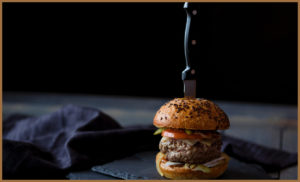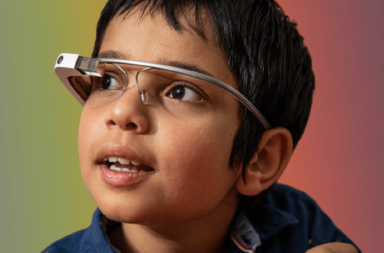People with autism have a complicated relationship when it comes to food. While many families with autistic children will struggle to get someone on the spectrum to eat (due to a diet consisting of solitary or limited food groups), many others will have their hands full, trying to stop an autist from constantly having their mouth full – yes, it’s not uncommon for autistic people to be in a constant food fight. However, unlike our often-restricted diets, the causes and solutions can be much more varied.
With this in mind (and with Eating Disorders Awareness Week beginning this Monday), today, I wanted to share my own experience of suffering from an eating disorder and give some insight into how to overcome restrictive eating in people on the spectrum.

What causes Food Problems in Autistic People?
Although it might not seem so, autistic people are often the ultimate foodies. This is because, when we sit down to eat, our minds don’t just register the flavour and presentation (as most people do) but also every other sense and stimuli in our surroundings – from the sounds we hear to the sights we see.
This is something which has always affected me and while, in recent years, my tolerance to sensory disturbances has improved, it used to be the case that a variety of senses would affect my meals; such as restaurants with electronic bathroom driers or even waitresses with too much makeup.
But while sensory problems are the most common reason for fussy eating on the spectrum, they aren’t the only one as many autistic people can struggle to eat something due to the connotations we have made with that particular food.
One example of this is a boy who would only eat pink foods. This arose after he had conditioned himself to believe that only pink food was healthy, due to the link he had made between wellness and the U.K.’s favourite children’s medicine: Calpol (I think the U.S. equivalent is called Tylenol – although I can’t confirm).
This is not the end of the challenges autistic people have when it comes to eating, however, as there are also many other autistic quirk related factors which play a role in unhealthy diets: including those who are susceptible to pica (eating non-edible objects) and those with obsessive personalities, who may calorie count.

My Experience of Eating Disorders
While I have never had a particularly great diet, predominantly living off bacon and shepherd’s pie for most of my early life (and even liquidized bacon sandwiches when I first got my braces), the lowest point of my dietary battle came in 2007, when my restrictive eating (or lack of) resulted in me being hospitalised with an eating disorder.
This all started after the breakup of my family meant that I was forced to move out from the house I had grown up in; leaving behind all sense of control as well as the nest of a routine I had spent years creating there.
I was vomiting a lot at this time as, like some kind of gross lizard seen on the Discovery Channel, my reaction to the threat of anxiety has always been to chuck up my guts. This got so bad that, in my naive mind, I thought I could overcome this permanent nausea (and gain back some control) by stopping eating altogether.
Of course, this didn’t go down well with my family and resulted in dramatic weight loss. However, when they had contacted a doctor for advice, they were initially told to just wait and when I was hungry enough I would come crawling back (little did they know how stubborn an autistic pre-teen can be).
Inevitably, things got much worse on these orders and, just before I reached a size where I could wear a Cheerio as a bracelet, I was taken to the hospital, extremely underweight, malnourished and diagnosed with what my friends would later delicately describe as ‘manorexia‘.

Now, I am far from an expert on eating disorders but, looking back, I’m fairly certain that if someone isn’t eating because they are trying to gain back control, it’s probably not a good idea to lock them up in a hospital ward and hook them up to a drip. However, at this stage, they were purely trying to treat the physical symptoms.
As such, I spent more time in that hospital plotting to get out than Wile E Coyote spent at the ACME store. I would try to convince the auxiliary staff that I was allergic to gluten and lactose-intolerant (which I would have got away with if it wasn’t for my meddling mum) and, when I did eat, I would make myself sick to get any forced foods out my system – I guess you could say I was also bulimic but this was not related to my body image.
This all culminated in the summer of that year, when I managed to escape from the ward and sneak out the hospital in the dead of the night, but not before yanking out my drip – which, word of warning, isn’t like the movies where it comes clean out. Instead, it hurts like hell as I only removed the tube and not the needle.
Eventually, after the police were called and search party sent out, I was discovered 5 miles from where I had made the great escape, and I had fallen fast asleep in the porch of the family home which had first caused my anxiety.
Over the weeks that followed, I was monitored very closely at the hospital (and never left alone). I regularly saw a therapist and I began a routine of being fed and then immediately sedated – this stopped me from becoming anxious and making myself vomit and therefore allowing the food time to be digested.
It took time, but I got stronger, put on weight and I was allowed home. We then selected I then selected a new house to live in, 2 minutes away from my old one, so I could still see the same people, go to the same shops and ride the same bus.
To this day any stress or situation will still impact me in the same way, but I have learnt that this feeling will pass and I have never had another episode as serious as that. I now concentrate on taking control of the problem and not the symptoms.

Resolving Food Problems in Autistic People
So, you’re probably now wondering, how to stop an autistic person from replicating the mistakes I made, which left me walking the streets of Stockport with a cannula in one arm and a gown which almost certainly guaranteed that the city experienced a full moon that night.
Well firstly, if you are concerned about an autistic person’s diet, step one is to start a diary. Like seriously, start a diary now! Make a note of every meal that a person has had in a day and jot down everything:
- The food given
- The food eaten
- Who was there?
- Where did it take place?
- What time did it take place?
- What could be seen?
- What could be smelt?
- What happened before?
- What was going to happen after?
- EVERYTHING.
Even if you only slightly suspect an autistic person is having food problems, it’s so important to have everything recorded, because it allows you to spot patterns and narrow down which sense could be causing the problem. Furthermore, if things progress, it allows you (or a possible dietician) to be able to trace back where the complication may have originated.
Once this has been recorded you can then look at ways to reduce the problem e.g. if a child is only eating bacon, try mixing the bacon in with other foods or try using bacon flavouring in meals which feature the nutrition the child is missing out on. Whilst the ‘don’t feed someone until they beg for it’ technique didn’t work on me, it may still might work on others.
Remember a lot of autistic food complications can be linked to a person’s routine so, using the same criteria outlined above, explain exactly how the new meal will be given to the autist (so the changes doesn’t come as a surprise). If the autist isn’t able to understand then, as always, social stories are your best friend.
During this time, it’s also important not to treat the food the autistic person enjoys as a reward as they will then see other foods as punishment and may become more deterred. Similarly, make sure everyone in the household is eating the same thing at the same time. If the autist sees that others don’t have to eat what they don’t want to, then we are more likely to resist what is on our plate.
Finally, while it’s understandable that any parents would feel defeated after being unable to do something as seemingly natural as feeding their child, this is not a reason to have to shoulder the burden alone. While I do believe the tips I have given can help, in certain cases (like my own), you may need the assistance of professionals such as therapists and dieticians, with a working knowledge of autism. This by no means makes you a failure as a parent/carer, as reaching out and finding specialised support proves that you only mean the best by getting the best.

Carry on the Conversation
Today’s article was requested by Magela over on the Autistic & Unapologetic Facebook page. If there’s anything you would like to see discussed on the site, please leave a comment below and I will see about adding it to the schedule. Also, if you want to hear more about the challenges my anxiety has caused and how it impact me then please follow this link to my: World Mental Health Day post.
As always, I can also be found on Twitter @AutismRevised and via my email: AutisticandUnapologetic@gmail.com.
If you like what you have seen on the site today, then show your support by liking the previously mentioned Autistic & Unapologetic Facebook page. Also, don’t forget to sign up to the Autistic & Unapologetic newsletter (found on the sidebar on laptops and underneath if you are reading this via mobile) where I share weekly updates as well as a fascinating fact I have found throughout the week.
Thank you for reading and I will see you next Saturday for more thoughts from across the spectrum.


